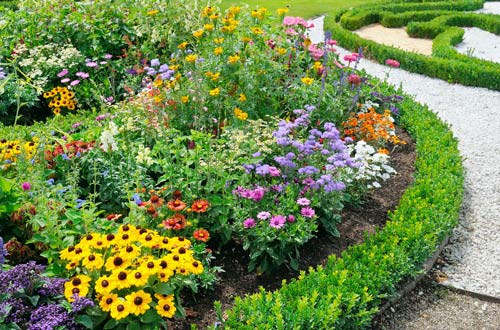
Homeowners face many different types of landscaping challenges. You may have too much water or too much sun, seasonal weather difficulties or just a tight budget and an older yard.
But no matter what your unique situation may be, there's a good chance that mulch could be your surprise solution. How? Here are six problems that mulch can help solve.
Too Much Water
With more and more areas suffering from worse weather and storms, it's vital to use your landscaping to help protect from water pooling and flooding. You can instantly raise low sections in the yard and even out small slopes by adding a layer or two of mulch. And covering bare areas with mulch helps prevent erosion.
Aside from serving as a leveler, mulch also controls how rainwater seeps into the ground. It absorbs rainwater quickly rather than letting it run off into the gutter, so your lawn and plants get more moisture. Secondly, it helps slow the absorption of water into the soil itself so that more of that liquid makes it into parched ground.
Winter Cold
Once summer is over, the challenge of properly preparing the yard for winter arises. Start by protecting your vegetable or herb garden with a thick layer of insulating mulch.
In addition to edible plants, identify perennials and flower bulbs that will spend the winter under the ground, then put a protective layer of mulch over them just as the temperature drops to about 25 degrees. Insulating plants that have died back will also prevent new growth from forming if the weather springs back up again during abnormally warm seasonal periods.
Summer Heat
Thirsty yards cost money and extra work to keep them looking nice. Mulching is an easy way to help protect from a baking sun. Why? It insulates delicate plant roots and trunks. Place a layer of between one and four inches of mulch around tree bases and bushes to give shade to their roots. Use more mulch around fastdraining soil (like sand) and less in areas where water drains slower.
Tired Landscaping
Many homeowners don't have a huge budget for a makeover. But you can always use inexpensive mulch to make over the yard. Fresh mulch looks as great as a new hardscape for a lot less. Add mulch to flower beds, around trees, over old walkway materials and around the borders of a lawn for an instant update.
With modern techniques, you can even choose different colors - including striking black, deep red, and rich gold varieties to add new hues to the yard.
High Maintenance
Mulch is a good way to reduce the need to spend hours on regular yard tasks like weeding. A thick layer of mulch around flowers or bushes prevents light from reaching down into the ground where pesky weeds germinate. Combine this natural protection with landscape fabric underneath the mulch to add even more weed control.
Kid and Pet Traffic
Do your kids and their friends love to play in the backyard but often leave it trampled? Do you have dogs who run regular routes in the yard, causing unsightly dirt paths? Try replacing high traffic areas with a soft and kid- or pet-friendly mulch. Look for well-worn routes in the yard, such as from the back door to the play area, then replace that grass or other organic material with a hardy mulch.
Using inexpensive mulch to create a wide, direct path between regular yard destinations can save the rest of your yard by naturally corralling foot traffic onto the walkway instead of across the landscape.
Mulch can be a great way to improve your yard's appearance and resilience with little effort. Why not talk to the mulch experts at Parker Bark Company, Inc. today to see how it can help your particular challenges?


